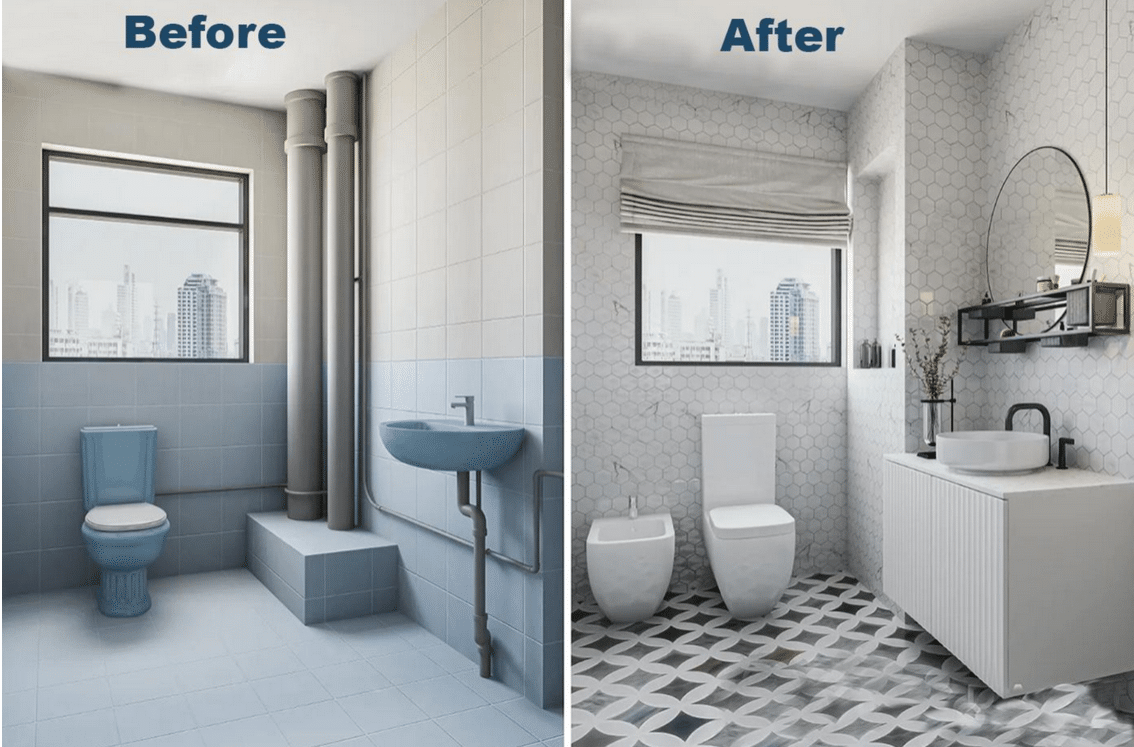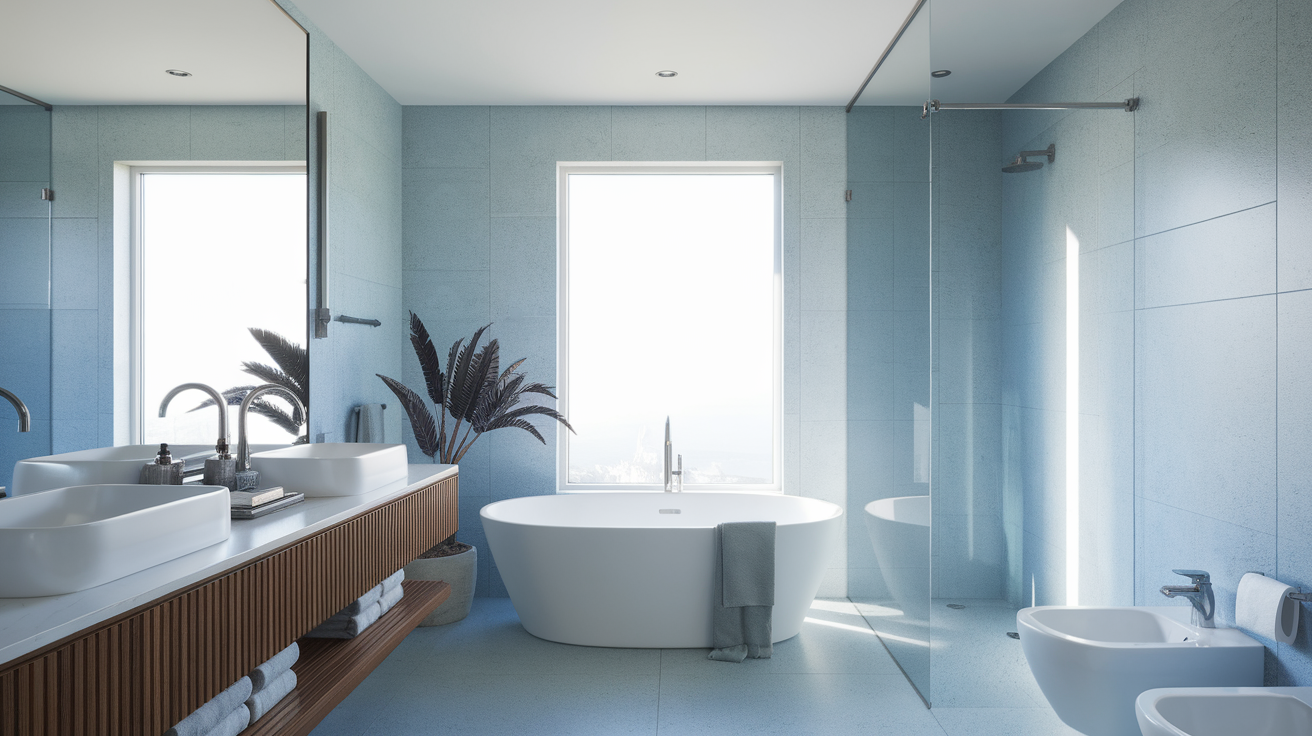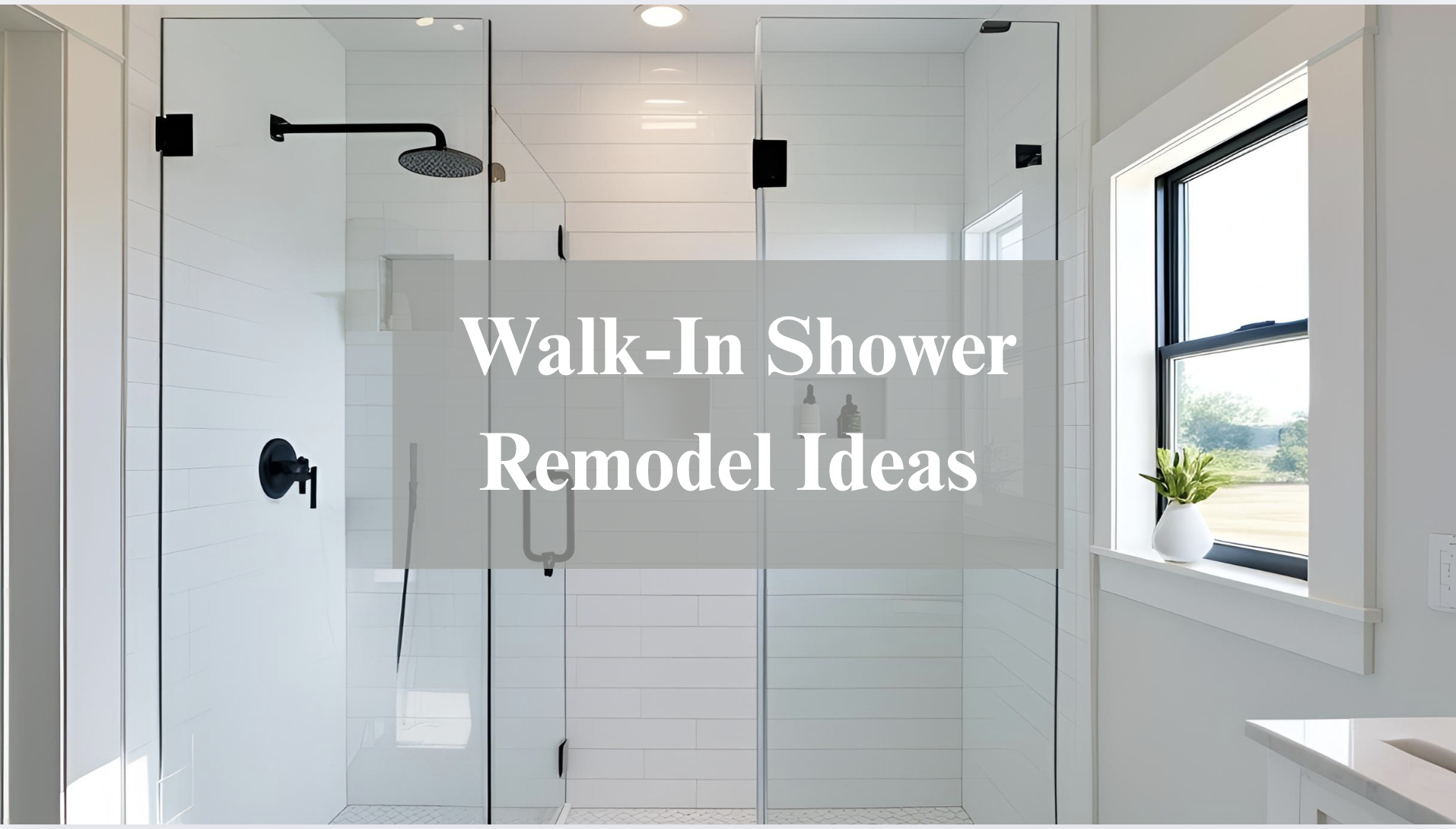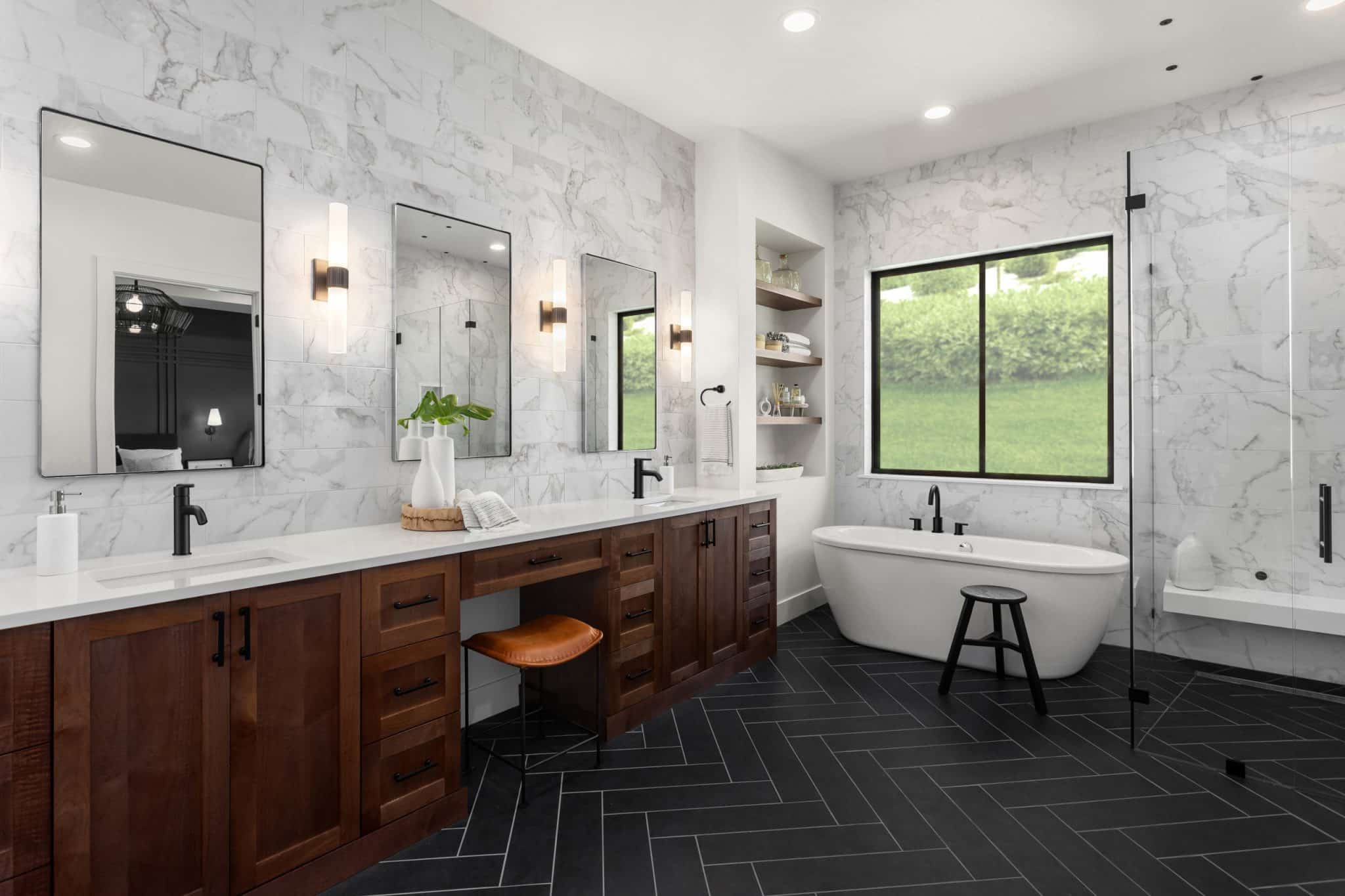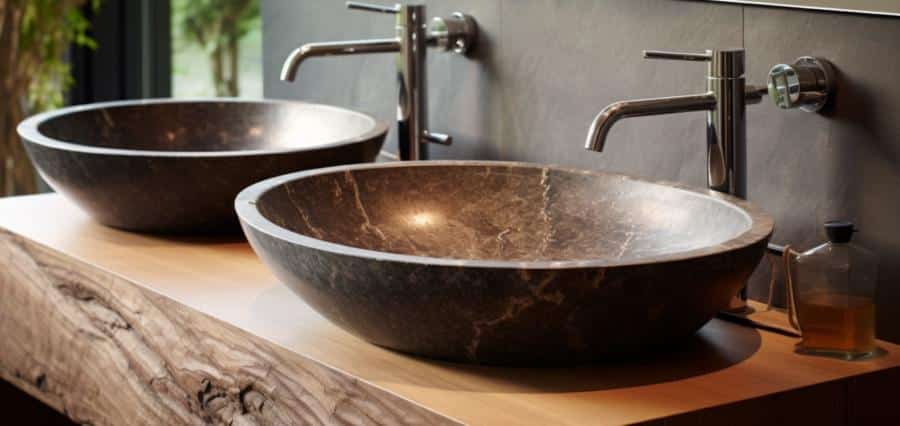Bathroom Renovation: A Guide to Planning and Executing the Perfect Bathroom Makeover
Are you eager to upgrade your bathroom but feeling lost about where to begin? Don’t worry! Planning a bathroom renovation might seem daunting, but with the right advice, you can bring your dream bathroom to life without any stress.
This guide covers all the important steps, from planning and layout to organisation tips and project do’s and don’ts, making sure your renovation goes smoothly.
So, How Do You Plan a Perfect Bathroom?
- Set Your Goals: Before starting the renovation, decide what you want to achieve. Do you need more space, a new style, or both? Knowing your priorities will guide the renovation process.
- Budget Wisely: Make a detailed budget that covers all potential costs like materials, labour, and unexpected expenses. Be practical and set aside money for any surprises that may come up during the renovation.
- Find Inspiration: Look for design ideas in magazines, online, or on social media. Create a mood board to visualise how you want your new bathroom to look and feel.
Understanding Bathroom Renovation Essentials
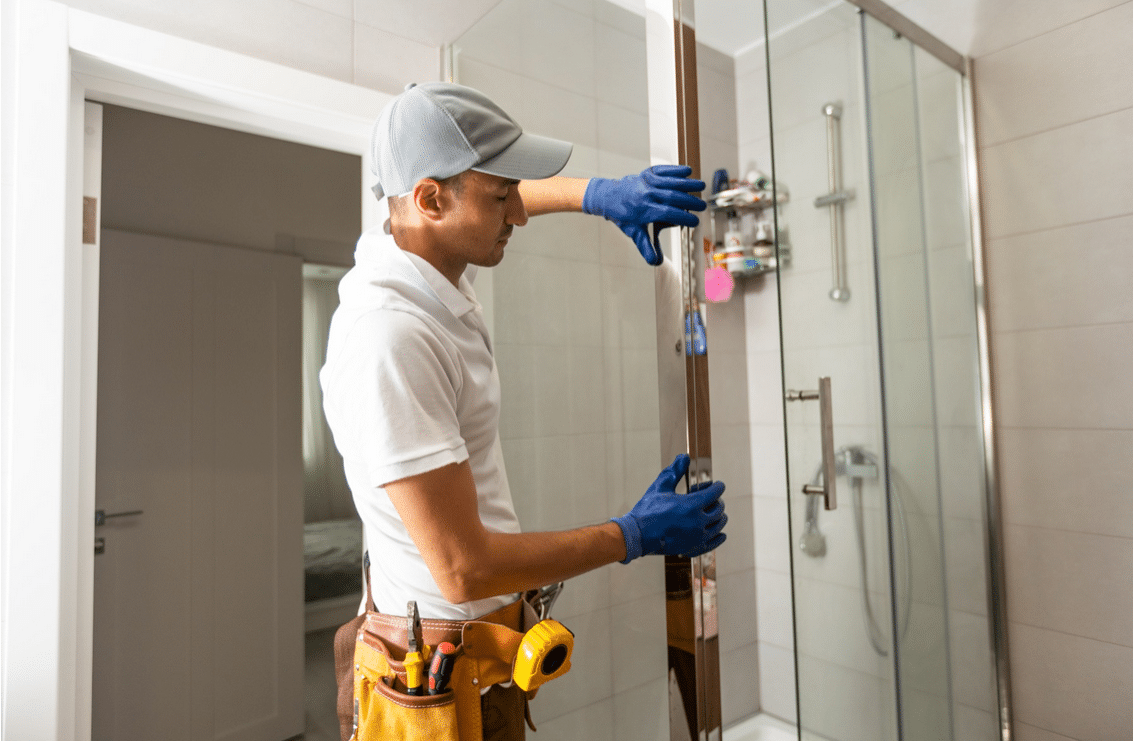
Before you begin your makeover journey, it’s essential to understand what should be included and what factors are to be considered in a bathroom renovation. From fixtures to finishes, here’s a detailed breakdown of what you need to know:
1. Fixtures:
- Sink and Vanity: Choose a sink and vanity that not only complements your bathroom’s style but also provides sufficient storage and functionality.
- Toilet: Select a toilet that fits the space and meets your preferences in terms of design and efficiency.
- Shower or Tub: Decide whether you want a shower, bathtub, or a combination of both. Consider factors such as space constraints and personal preferences.
- Faucets and Hardware: Pay attention to the faucets and hardware, as they can significantly impact the overall aesthetic of your bathroom.
2. Finishes:
- Flooring: Select durable and water-resistant flooring options such as ceramic tiles, porcelain tiles, or vinyl flooring.
- Walls: Choose paint, wallpaper, or tiles for the walls that complement the overall design theme of your bathroom while being resistant to moisture.
- Countertops: Opt for countertops that are both stylish and functional. Materials like granite, quartz, or marble offer durability and elegance.
- Lighting: Install adequate lighting fixtures to ensure proper illumination in the bathroom. Consider incorporating a mix of overhead lights, task lights, and accent lights for optimal functionality and ambiance.
3. Layout and Space:
- Functional Layout: Plan a layout that maximises space efficiency and functionality. Consider the placement of fixtures and ensure easy accessibility and comfort.
- Sufficient Space: Aim for a bathroom layout that provides sufficient space for movement and storage. Ensure there’s enough clearance around fixtures and ample storage options for toiletries and essentials.
4. Design Considerations:
- Style and Theme: Determine the style and theme you want to achieve in your bathroom renovation, whether it’s modern, traditional, minimalist, or eclectic.
- Colour Scheme: Choose a cohesive colour scheme that creates a harmonious and inviting atmosphere in the bathroom.
- Storage Solutions: Incorporate smart storage solutions such as built-in cabinets, shelves, and niches to keep the bathroom organised and clutter-free.
5. DIY vs. Professional Help
Decide if you want to do the renovation yourself or hire pros. DIY saves money, but big jobs might need experts. Pick what fits your skills and the project size.
6. Create A Timeline
Set a practical timeline for your bathroom redo. Think about how big the project is, when materials are available, and if you’re doing it all at once or in stages. A good timeline keeps things on track and makes everything easier.
Executing The Renovation
- Demolition: Begin with the demolition phase, removing old fixtures, tiles, and any unwanted elements and avoid damage. If you’re unsure, get pros to help.
- Plumbing and Electric: Get plumbing and electric work done early. Make sure everything meets safety rules. Pros might be needed here.
- New Fixtures: Put in new stuff like tubs, showers, sinks, and toilets. Prep for tiling and flooring too. If adding new stuff like vanities, do it now.
- Tile and Floor: Pick good tiles and flooring that match your style. Install tiles right, especially in wet areas. Good tiling looks nice and works well.
- Paint and Finish: Paint walls and ceilings in colours you like. Add mirrors, lights, and accessories to finish off your new bathroom.
How to Save Money on Bathroom Renovation:
- Set a Budget: Plan carefully and stick to a realistic budget.
- DIY: Try doing simple tasks yourself to save on labour costs.
- Keep Plumbing: Keep existing plumbing to avoid extra expenses.
- Refinish Instead of Replace: Refinish certain elements instead of buying new ones.
- Shop Smart: Look for discounted materials to save money.
- Optimise Lighting: Make the most of natural light and use energy-efficient fixtures.
- Reuse Fixtures: If they’re still good, keep and reuse existing fixtures.
- Get Multiple Quotes: Compare quotes from different contractors to find the best deal.
- Prioritise Upgrades: Focus on essential changes first, then add extras if there’s room in the budget.
- Avoid Structural Changes: Structural changes can be costly, so avoid them if possible.
- Evaluate Expenses: Be selective about where you spend money to stay within budget while still getting a refreshed bathroom.

Five tips for organising your bathroom
- Declutter regularly: Get rid of unused or expired items to free up space and keep the bathroom tidy.
- Use storage solutions: Invest in cabinets, shelves, and organisers to maximise storage space and keep essentials within reach.
- Group similar items together: Organise toiletries, cosmetics, and cleaning supplies into categories to make them easier to find.
- Utilise vertical space: Install hooks, racks, or baskets on walls or doors to hang towels and robes and free up floor space.
- Keep it clean: Develop a routine for cleaning and maintaining the bathroom to prevent clutter from accumulating.
Begin your bathroom renovation journey confidently with the tips and insights from this guide. Whether you’re a DIY expert or hiring pros, these tips will help you achieve your dream bathroom without breaking the bank.
FAQs
Where do I start when planning a bathroom renovation?
Start by assessing your needs, setting a budget, and creating a design plan. Research different fixtures, finishes, and layouts to determine what works best for your space and preferences. Consider consulting with professionals such as designers or contractors to guide you through the renovation process.
How do I start a bathroom project?
Begin by outlining your goals and priorities for the project. Determine the scope of work, set a realistic budget, and establish a timeline for completion. Gather inspiration from magazines, websites, or design blogs to help shape your vision. Consider hiring professionals if the project requires expertise beyond your capabilities.
What is sufficient space for a bathroom?
The sufficient space for a bathroom depends on various factors such as the size of the household, individual preferences, and local building codes. However, a standard full bathroom typically requires at least 35 square feet of floor space for a bathtub, toilet, and sink. Additional space may be needed for storage, shower enclosures, or accessibility features.
What is a full bathroom layout?
A full bathroom layout typically includes a toilet, sink, bathtub, and/or shower. The layout can vary depending on the available space and personal preferences. Common configurations include a single-wall layout, where fixtures are arranged along one wall, or a two-wall layout, where fixtures are placed along adjacent walls. Accessibility considerations and storage needs may also influence the layout design.
What are the unspoken rules of the bathroom?
Some unspoken rules of the bathroom etiquette include:
- Cleaning up after yourself: Wiping down surfaces, flushing the toilet, and disposing of trash properly.
- Respecting privacy: Knock before entering, avoid lingering, and give others space.
- Using resources responsibly: Limiting water usage, conserving supplies, and avoiding excessive noise.
What not to do in a bathroom?
Avoid the following common mistakes in the bathroom:
- Ignoring ventilation: Proper ventilation helps prevent moisture buildup and mould growth.
- Overlooking safety features: Install grab bars, non-slip surfaces, and adequate lighting to minimise accidents.
- Neglecting maintenance: Regular cleaning and upkeep are essential for preserving the condition of fixtures and finishes.
- Neglecting storage: Lack of storage leads to clutter and disorganisation, making the bathroom less functional and inviting.

